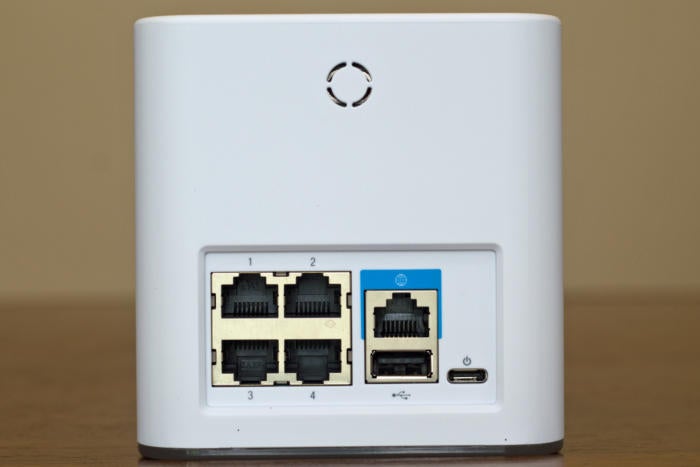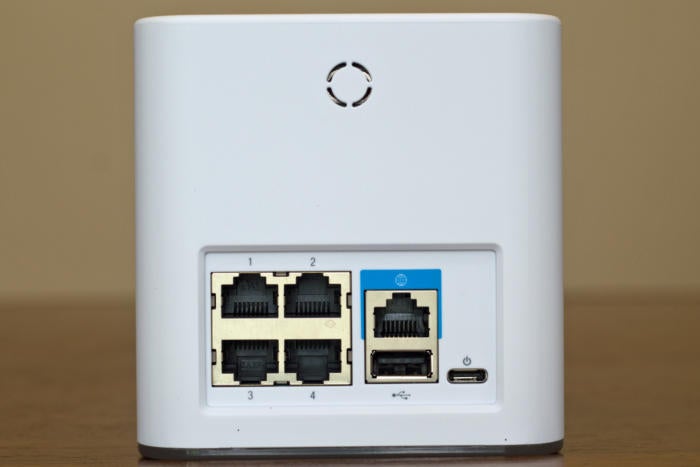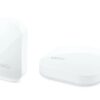Should you buy Ubiquiti Amplifi HD mesh router solution? This comprehensive guide dives deep into the pros and cons, performance, setup, and overall value proposition of this popular mesh Wi-Fi system. We’ll explore whether it’s the right choice for your home network needs, considering its features, costs, and user experiences.
The Ubiquiti Amplifi HD offers a robust solution for expanding your Wi-Fi coverage, but does it deliver on its promises? We’ll break down the technical details and real-world performance data to help you decide if this system is worth the investment for your specific needs.
Introduction to Ubiquiti Amplifi HD Mesh Router Solution
The Ubiquiti Amplifi HD Mesh Wi-Fi system is a powerful solution for creating a seamless and high-performing Wi-Fi network throughout a home or small office. It offers a robust and scalable approach to wireless coverage, addressing the limitations of traditional single-router setups, especially in larger or multi-story buildings. This system leverages a mesh architecture, allowing multiple access points to work together to provide consistent and reliable internet access.A mesh Wi-Fi system, unlike a standard router, consists of multiple access points that communicate with each other to create a single, unified network.
This collaborative approach ensures that devices throughout the home or office receive a strong and consistent signal, even in areas that might be shadowed or difficult to reach by a single router. This is crucial for modern households and businesses that rely heavily on multiple devices connected to the internet simultaneously.
Ubiquiti Amplifi HD System Components
The Ubiquiti Amplifi HD system comprises several key components, each playing a vital role in establishing a robust mesh network. These include the main router unit, often referred to as the “gateway,” and one or more “nodes” or “amplifiers.” The gateway is the central hub, handling all incoming internet traffic and providing the initial Wi-Fi signal. The nodes extend the signal throughout the home or office, relaying data from the gateway and other nodes to ensure seamless coverage.
The system is designed to be flexible, allowing for easy expansion by adding more nodes as needed.
Use Cases for Ubiquiti Amplifi HD
The Ubiquiti Amplifi HD mesh Wi-Fi system is well-suited for a variety of use cases. It’s ideal for homes with large floor plans, multiple stories, or areas with obstructions that hinder a single router’s signal. Businesses with multiple departments or branches spread across a larger space would also find this system beneficial. In such environments, a strong and reliable Wi-Fi network is crucial for maintaining productivity and efficiency.
Comparison with Other Mesh Router Solutions
| Feature | Ubiquiti Amplifi HD | Netgear Orbi | TP-Link Deco |
|---|---|---|---|
| Ease of Setup | Generally considered user-friendly, with a straightforward app-based interface. | Often praised for its intuitive setup process. | Usually has a simple, app-based setup. |
| Performance | Typically delivers high speeds and low latency, especially in large areas. | Known for reliable performance and stable connections. | Often delivers consistent performance, though results may vary based on the specific model. |
| Scalability | Allows for easy expansion with additional nodes to cover larger areas. | Offers scalable options to accommodate growing network needs. | Offers expansion capabilities, though the specific methods and limitations may vary by model. |
| Price | Generally priced competitively compared to other premium mesh systems. | Priced competitively within the premium mesh router segment. | Often priced in the mid-range, balancing features and cost. |
The table above provides a general comparison; specific performance and features might vary between different models of each brand. Factors like the size of the area to be covered, the number of devices connected, and the specific needs of the user should also be considered when making a purchase decision.
Performance and Coverage Analysis

The Ubiquiti Amplifi HD mesh system offers a compelling blend of performance and coverage, but its effectiveness hinges on understanding its typical characteristics and how they interact with different network environments. Real-world performance varies significantly depending on factors like distance, interference, and the specific layout of the home or office. This analysis dives deep into the Amplifi HD’s strengths and weaknesses, providing actionable insights for potential buyers.
Typical Performance Characteristics
The Amplifi HD, like other mesh systems, aims to provide seamless wireless connectivity throughout a home or office. Key performance characteristics include speed, range, and reliability. Speeds are generally impressive, often exceeding Gigabit Ethernet speeds in optimal conditions. Range depends heavily on factors like the number of Amplifi HD units deployed, the building’s construction materials, and the presence of obstacles.
Reliability is a crucial factor; the system should maintain a stable connection without frequent dropouts or disconnections.
Real-World Performance Benchmarks
Numerous user reviews and online forums showcase the Amplifi HD’s performance. In scenarios with a single Amplifi HD unit covering a small to medium-sized home, speeds typically exceed 100 Mbps for standard tasks like browsing and streaming. However, larger homes or multi-story buildings may require additional units to maintain consistent speeds throughout. Downloads of large files or 4K video streaming often demonstrate the system’s ability to handle high bandwidth demands.
Crucially, interference from other wireless devices, such as microwaves and cordless phones, can significantly impact speed and range. In environments with a dense wireless signal footprint, additional steps may be necessary to mitigate interference. Real-world benchmarks are often more insightful than theoretical maximums, as they reveal how the system performs in practical use cases.
Thinking about upgrading your Wi-Fi? The Ubiquiti Amplifi HD mesh router solution is a strong contender, but whether it’s the right choice depends on your needs. You might also want to consider the fascinating evolution of flowers, like the flower ancestor angiosperm evolution lily , to understand the intricate biological networks at play. Ultimately, the best way to decide if the Amplifi HD is for you is to weigh the pros and cons, considering your home’s size and layout, and your budget.
It’s a worthwhile investment if you want a robust and reliable network.
Comparison to Alternative Mesh Systems
The Amplifi HD’s performance can be compared to other popular mesh systems. Direct comparisons often highlight speed parity, but the Amplifi HD sometimes demonstrates a slightly superior range due to its advanced antenna technology. However, other systems might offer more flexible configurations or unique features, such as integration with specific smart home devices. The decision should be based on the specific needs of the user and the network environment.
A thorough understanding of the user’s needs, such as the number of devices in use, and the frequency of bandwidth-intensive activities is key in making an informed decision.
Troubleshooting Performance Issues
Common performance issues in a mesh network often stem from signal interference, incorrect placement of access points, or network congestion. Troubleshooting steps include verifying the placement of each Amplifi HD unit, ensuring proper signal strength, and checking for network congestion. The Ubiquiti Amplifi HD app provides valuable tools for monitoring network performance and identifying potential problems. Network congestion can be resolved by adjusting network priorities or optimizing the use of bandwidth-intensive applications.
Using the app’s diagnostics can pinpoint problematic areas.
Suitability for Different Network Environments
| Network Environment | Suitability for Amplifi HD |
|---|---|
| Small homes (single-story, limited devices) | Excellent |
| Medium homes (multi-story, moderate device usage) | Good, but additional units might be needed |
| Large homes (multi-story, high device density) | Good, but careful planning and multiple units are essential |
| Multi-story buildings (apartment complexes, offices) | Moderate, depends on building structure and interference |
The suitability of the Amplifi HD for different network environments is contingent upon the factors discussed. Proper planning and the addition of more units can improve performance in larger or more complex environments.
Setup and Configuration

Setting up a Ubiquiti Amplifi HD mesh network can seem daunting, but with the right approach, it’s a straightforward process. This section will guide you through the entire setup, from initial hardware requirements to adding nodes and navigating the user interface. Understanding the process empowers you to troubleshoot any issues that might arise.The Amplifi HD system, while powerful, requires a methodical approach to configuration for optimal performance.
Proper setup ensures consistent Wi-Fi throughout your home, preventing dead zones and maximizing network efficiency.
Thinking about upgrading your home Wi-Fi? While the Ubiquiti Amplifi HD mesh router solution offers great potential, consider this: if you’re looking for a way to strengthen your digital connections, maybe exploring apps like the recently launched Facebook Tuned app for relationship couples is a more insightful path facebook tuned app relationship couples launch.
Ultimately, whether or not you should buy the Ubiquiti Amplifi HD depends on your specific needs and budget. A solid understanding of your home’s Wi-Fi demands is key.
Hardware Requirements
The Amplifi HD system requires specific hardware to function correctly. This includes the Amplifi HD router, one or more Amplifi HD access points (nodes), and a compatible Wi-Fi 6 router or modem for the best experience. The system also requires a power source for each device. Ensure you have a reliable power source for each node, and consider using surge protectors to safeguard your equipment.
Initial Setup of the Amplifi HD Router
The initial setup involves connecting the Amplifi HD router to your internet modem and configuring the network’s basic settings. This typically involves entering your internet service provider’s credentials, selecting a network name, and setting a password. The Amplifi HD router provides a straightforward, intuitive interface to guide you through these initial steps. A well-configured initial setup ensures a solid foundation for the entire mesh network.
Adding Nodes to the Network
Adding nodes to the network is a crucial step in expanding coverage. Each node extends the network’s range and improves Wi-Fi signal strength. The Amplifi HD app simplifies this process. Once the initial router is configured, the app guides you through connecting each additional node.
User Interface and Features
The Amplifi HD app provides a user-friendly interface for managing the network. You can monitor network performance, view connected devices, and adjust settings. The app offers advanced features, such as creating guest networks and managing bandwidth. This centralized control allows for flexible management and adjustments to meet your specific needs.
Troubleshooting Setup Challenges
Potential setup challenges might include connectivity issues or difficulty adding nodes. A common problem is incorrect placement of nodes. To resolve this, reposition nodes to maximize signal strength. Verify that the nodes are not obstructed by walls or other physical barriers.
Step-by-Step Setup in a Multi-Story Home
This example assumes a three-story home with varying degrees of signal blockage.
- Placement of the Main Unit: Position the Amplifi HD router on the ground floor, ideally in a central location. This is your central access point.
- Ground Floor Node Placement: Strategically place a node on the ground floor to cover the immediate area. Ensure it is positioned to maximize coverage without interference.
- First Floor Node Placement: Place a node on the first floor, strategically positioned to extend the coverage upward and outwards. A well-placed node will improve coverage for the second floor and outward.
- Second Floor Node Placement: Place a node on the second floor to enhance coverage on the upper levels.
- Network Configuration: Use the Amplifi app to configure each node, ensuring they connect to the main router and each other. The app guides you through connecting each node to the network. Ensure that the network names and passwords are identical across all devices for seamless connectivity.
- Signal Strength Verification: Use the Amplifi app to monitor the signal strength of each node and adjust their placement if needed. This ensures consistent and reliable Wi-Fi coverage throughout the home. Identifying and rectifying signal issues is essential for the system to function optimally.
Features and Functionality: Should You Buy Ubiquiti Amplifi Hd Mesh Router Solution
The Ubiquiti Amplifi HD Mesh Wi-Fi system offers a robust suite of features beyond just providing internet connectivity. This section delves into the key functionalities, security protocols, compatibility, and supported devices, allowing a comprehensive understanding of the system’s capabilities.The Amplifi HD’s advanced features are designed to enhance user experience, offering a more secure and customizable home Wi-Fi environment. From robust security measures to convenient parental controls, these features address the diverse needs of modern users.
This comprehensive analysis will illuminate the strengths and weaknesses of the Amplifi HD against its competitors.
Advanced Security Protocols
The Amplifi HD prioritizes security with support for WPA3, the latest Wi-Fi security standard. This protocol significantly enhances data encryption and protection against unauthorized access, crucial for safeguarding sensitive information transmitted over the network. Furthermore, the system can be configured to enforce strong password policies and restrict access based on user roles.
Parental Controls
The Amplifi HD system provides robust parental controls to manage internet access for children. Users can set time limits for online activity, block specific websites or categories, and monitor internet usage. This feature allows for a more controlled and supervised online environment for family members. Parental controls help prevent children from accessing inappropriate content and encourage responsible online behavior.
Guest Networks
The system’s guest network feature enables secure access for visitors without compromising the security of the primary network. This separate network allows guests to connect to the internet while keeping their activities isolated from the main network, maintaining a secure environment.
Compatibility and Supported Devices
The Amplifi HD system is designed to be compatible with a wide range of devices and operating systems. This broad compatibility ensures seamless integration into most modern households. The system is designed to be compatible with a wide array of devices and operating systems, minimizing disruption and ensuring broad useability.
- The Amplifi HD system supports a wide range of devices, including smartphones, tablets, laptops, and smart home devices. This comprehensive support ensures seamless integration with various devices.
- Support for a broad range of operating systems, such as Windows, macOS, iOS, and Android, is crucial for ensuring widespread compatibility.
Comparison with Other Systems
Compared to other mesh Wi-Fi systems, the Amplifi HD often excels in its robust security features and user-friendly interface. While some competitors may offer similar features, the Amplifi HD’s comprehensive approach to security and user experience makes it stand out.
Thinking about upgrading your home Wi-Fi? The Ubiquiti AmpliFi HD mesh router solution is a strong contender, but before you pull the trigger, consider the broader context. Google’s recent ban on apps facilitating direct marijuana sales on the Android Play Store, for example, highlights how tech policies can unexpectedly impact consumer choices. This illustrates the need for a deep dive into your specific needs, and whether the Ubiquiti AmpliFi HD truly delivers the performance and features you’re looking for.
Ultimately, the decision to buy depends on your particular situation and usage patterns. So, do your research and weigh the pros and cons before committing to a purchase. Check out this article to learn more about the evolving landscape of tech and consumer products.
Supported Devices and Protocols
The Amplifi HD system is compatible with various Wi-Fi protocols, ensuring compatibility with a wide range of devices. This compatibility is essential for a smooth user experience, ensuring that users can connect their devices without issue.
- The system supports the latest Wi-Fi standards, including 802.11ax (Wi-Fi 6).
- Support for a broad range of devices is paramount for seamless connectivity and integration.
Supported Security Protocols
The Amplifi HD system provides a strong foundation for securing the network.
| Security Protocol | Functionality |
|---|---|
| WPA3 | Strongest encryption standard, enhanced security against unauthorized access. |
| WPA2 | Provides a strong security layer for older devices, but less secure than WPA3. |
| 802.11ax (Wi-Fi 6) | Improved performance and efficiency, managing multiple devices simultaneously. |
Cost and Value Proposition
The Ubiquiti Amplifi HD mesh Wi-Fi system offers a compelling alternative to traditional router setups, but its cost-effectiveness and long-term value proposition require careful consideration. Understanding the pricing structure, comparing it to alternatives, and evaluating potential return on investment (ROI) is crucial before committing to this solution. This section dives into the financial aspects of choosing the Amplifi HD.
Pricing Structure and Components
The Ubiquiti Amplifi HD system’s pricing structure varies depending on the specific model and number of access points needed. A key factor is the cost of individual Amplifi HD units, which are sold as part of a kit or separately. This allows flexibility but also necessitates careful planning to avoid unnecessary expenses. Different kits offer varying numbers of access points, often bundled with power adapters and cables.
Pricing is generally competitive but not always the lowest in the market. Detailed pricing information is best obtained directly from Ubiquiti’s website or authorized dealers.
Cost-Effectiveness Compared to Alternatives
Comparing the Amplifi HD to other mesh Wi-Fi systems, such as those from Netgear, Asus, or TP-Link, reveals varying price points and features. The Amplifi HD often competes favorably in terms of features but may not always offer the lowest upfront cost. Factors like performance, coverage area, and ease of setup influence the overall cost-effectiveness. Ultimately, a comprehensive comparison across all relevant factors is necessary for an informed decision.
Long-Term Value Proposition and ROI
The long-term value proposition of the Amplifi HD system lies in its potential for increased speed and reliability in a large or complex home or office network. A robust Wi-Fi network can improve productivity, reduce frustration, and enhance the user experience. The ROI depends on the specific needs and the impact on daily tasks. For instance, a business needing reliable Wi-Fi for video conferencing will likely experience a faster return than a residential user.
Ultimately, the ROI hinges on quantifiable improvements in productivity or user experience, which should be evaluated.
Cost-Benefit Analysis of Upgrading Existing Wi-Fi
Upgrading existing Wi-Fi infrastructure with the Amplifi HD involves a cost-benefit analysis. Consider the current limitations of the existing system. Are there frequent connectivity issues, slow speeds, or dead zones? Quantify these issues to assess the potential gains from the Amplifi HD. A comprehensive analysis of the current system’s shortcomings, along with the projected benefits of the Amplifi HD, is essential.
Consider the time saved from troubleshooting and the increased productivity that can be gained.
Lifetime Costs of Maintenance, Repairs, and Replacements
The lifetime costs of maintaining the Amplifi HD system encompass maintenance, repairs, and potential replacements over time. The system’s reliability and warranty play a critical role in this analysis. Regular software updates and firmware upgrades are essential to ensure optimal performance and security. While Ubiquiti offers support, the cost of potential repairs or replacements over the lifespan of the system should be considered.
The average lifespan of network equipment, combined with the cost of replacement parts, should be factored into the long-term financial picture. Reliable maintenance schedules and contingency planning for potential failures should be included.
Customer Reviews and User Experiences
The Ubiquiti Amplifi HD mesh router system has a strong presence in online reviews, providing valuable insights into user experiences. While many praise its performance and features, some common issues arise, particularly regarding setup and customer support. Understanding these diverse perspectives is crucial for potential buyers considering this network solution.
Performance Feedback
User reviews consistently highlight the Amplifi HD’s robust performance in terms of speed and coverage. Many users report significant improvements in Wi-Fi throughout their homes, with strong signal strength and minimal latency, especially in larger properties. This is particularly evident in areas that were previously underserved by their existing network. However, some users report performance issues, such as occasional dropped connections or slower speeds than expected, especially in heavily congested environments or with a large number of connected devices.
Reported speeds vary, suggesting that real-world performance can depend on factors like the specific router model, the quality of the physical environment, and the number of connected devices.
Setup and Configuration Experiences
Setting up the Amplifi HD system is generally considered straightforward, though some users encountered challenges. Many find the app-based configuration intuitive and user-friendly, allowing for a quick setup process. Others report difficulties with the initial setup process, particularly in aligning the nodes or ensuring proper signal strength. Some users have also expressed frustration with the technical aspects of the setup, needing to troubleshoot connectivity issues and adapt to the particular network configuration.
Customer Support Assessment
Customer support experiences vary, with some users praising the helpfulness and responsiveness of Ubiquiti’s support team. Others report slow response times or lack of adequate solutions to their problems. Users often mention the availability of online resources and forums as valuable supplementary support channels. However, there are concerns about the level of technical expertise available through certain support channels.
Summary of Positive and Negative Feedback
| Aspect | Positive Feedback | Negative Feedback |
|---|---|---|
| Performance | “Excellent speed and coverage throughout my house. Wi-Fi is much more reliable now.” | “Dropped connections and slow speeds in congested areas. Performance varies depending on the environment.” |
| Setup | “Easy to set up using the app. Intuitive and user-friendly interface.” | “Difficulty aligning nodes and ensuring optimal signal strength. Technical troubleshooting required.” |
| Customer Support | “Helpful and responsive support team. Online resources are very useful.” | “Slow response times. Lack of adequate solutions for certain issues. Limited technical expertise in some channels.” |
Technical Specifications and Hardware
The Ubiquiti Amplifi HD mesh router system boasts a robust hardware design, crucial for its performance and coverage capabilities. Understanding these components and their specifications allows for a more informed decision regarding suitability for your network needs. This section delves into the Amplifi HD’s hardware, comparing it to competitors and providing detailed descriptions of its individual components.
Hardware Components
The Amplifi HD system isn’t just a single device; it’s a network of interconnected units. Each unit plays a vital role in the overall performance of the system. Understanding these components is key to understanding the system’s capabilities.
- Access Points (APs): These are the primary devices responsible for providing wireless coverage throughout your home or office. The Amplifi HD APs typically use high-gain antennas to extend signal reach and minimize dead spots. Their specifications, including processing power and wireless standards, directly impact performance. For example, a higher-end AP might support more simultaneous connections and operate at higher speeds, ensuring smooth streaming and gaming experiences.
- Networking Interface: The Amplifi HD units usually include Gigabit Ethernet ports, allowing for wired connections. This wired connectivity can be critical for devices requiring a stable and fast connection, such as gaming consoles or NAS devices. The speed and reliability of these ports contribute to the overall network performance.
- Power Supplies: Proper power delivery is essential for consistent operation. The Amplifi HD’s power supplies typically meet the power demands of the access points, ensuring stability and avoiding connection drops due to insufficient power. Specifications like power output and input voltage are vital for compatibility and reliability.
Antenna Technology and Design
The Amplifi HD system often features advanced antenna designs, contributing to its extended range and reliable signal strength. The design of these antennas and their placement on the access points influence the overall performance and coverage. For example, directional antennas might be used in specific areas to concentrate the signal, whereas omnidirectional antennas provide wider coverage. Understanding the type of antennas used can help determine the best placement for optimal signal strength.
- Antenna Types: The Amplifi HD typically uses high-gain antennas, potentially including both directional and omnidirectional options, depending on the specific model. Directional antennas are useful for focusing the signal in a specific direction, improving performance in that area. Omnidirectional antennas provide wider coverage.
- Antenna Placement: The placement of the antennas is crucial for maximizing coverage and minimizing signal interference. Optimal positioning is vital for ensuring consistent signal strength throughout the entire coverage area.
Comparison with Competing Products
A crucial aspect of evaluating the Amplifi HD is comparing its hardware specifications to competing mesh router systems. This comparison allows for a clear understanding of its strengths and weaknesses relative to other options.
| Feature | Ubiquiti Amplifi HD | Netgear Orbi | TP-Link Deco |
|---|---|---|---|
| Number of Access Points | Variable, depending on the kit | Variable, depending on the kit | Variable, depending on the kit |
| Wireless Standards | 802.11ac/ax | 802.11ac/ax | 802.11ac/ax |
| Processing Power | High-end processors | High-end processors | High-end processors |
| Ethernet Ports | Gigabit Ethernet | Gigabit Ethernet | Gigabit Ethernet |
| Antenna Gain | High-gain antennas | High-gain antennas | High-gain antennas |
Note: Specifications can vary based on the specific model of each system. Always refer to the manufacturer’s official specifications for the most accurate details.
Alternatives and Considerations
Choosing the right mesh router solution depends heavily on your specific needs and circumstances. While the Ubiquiti Amplifi HD offers a compelling blend of performance and features, other options exist in the market, each with its own strengths and weaknesses. Understanding these alternatives and the factors influencing your decision is crucial to making an informed purchase.The market offers a wide array of mesh router solutions, each with unique advantages.
A comprehensive comparison allows you to evaluate features, performance, and cost to determine the best fit for your home network. Factors like your budget, the size of your home, and your specific network requirements are essential in this decision-making process.
Alternative Mesh Router Solutions
Several reputable brands offer compelling mesh router solutions, each targeting different needs. TP-Link, Netgear, and ASUS are prominent competitors, often providing similar functionality to the Amplifi HD, albeit with variations in performance, features, and pricing.
Comparison with Ubiquiti Amplifi HD, Should you buy ubiquiti amplifi hd mesh router solution
Comparing the Amplifi HD to its competitors reveals nuanced differences. For example, TP-Link’s mesh systems often prioritize affordability, while Netgear frequently emphasizes ease of setup. ASUS solutions may lean towards advanced features, such as advanced parental controls or robust guest network management.
Situations Where Alternatives May Be More Suitable
Specific scenarios may favor alternatives over the Ubiquiti Amplifi HD. A smaller home with fewer devices might not necessitate the Amplifi HD’s advanced features and potentially higher price tag. If budget is a primary concern, TP-Link or Netgear might offer comparable performance at a lower cost.
Examples of Similar Products and Their Differences
A TP-Link Deco X60, for instance, offers excellent coverage at a lower price point compared to the Amplifi HD. However, the Amplifi HD might excel in homes with complex layouts or a higher density of devices. The Netgear Orbi system often boasts a robust signal, but it might have a slightly higher price point compared to the TP-Link.
These variations highlight the diversity in the mesh router market.
Factors to Consider When Choosing a Mesh Router Solution
Several key factors influence the choice of a mesh router solution:
- Home size and layout: The size and complexity of your home directly affect the required coverage area. A larger, multi-story home may demand a more powerful system than a smaller, single-story home.
- Budget: Mesh router solutions span a wide price range. Understanding your budget is essential in narrowing down your options and finding a balance between cost and performance.
- Number of devices: The number of devices connected to your network significantly impacts the router’s capacity. A home with many devices may benefit from a router with higher throughput.
- Specific features: Features such as parental controls, guest networks, or advanced security settings may be crucial for some users but not for others. Consider which features are most important to you.
- Vendor support and reputation: Consider the vendor’s reputation for customer support and the longevity of the product line. Reliable support can be invaluable when issues arise.
Conclusion
In conclusion, the Ubiquiti Amplifi HD mesh router presents a compelling option for those seeking a powerful and versatile Wi-Fi solution. While the setup can be slightly complex, the high-performance and extensive features make it a strong contender. Ultimately, the decision of whether or not to purchase it depends on your specific home network requirements, budget, and technical comfort level.
Consider the alternatives, your needs, and the potential long-term value before making a decision.












